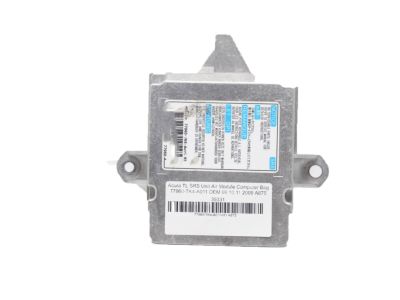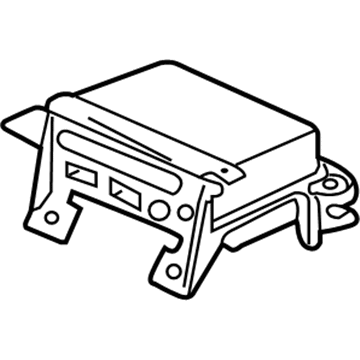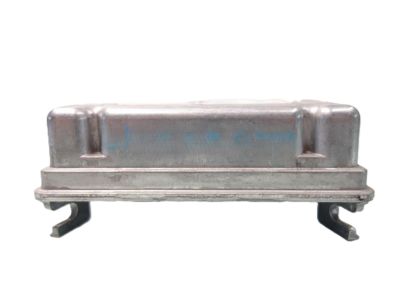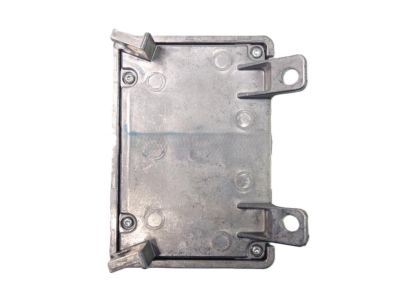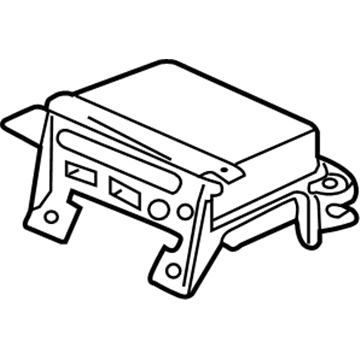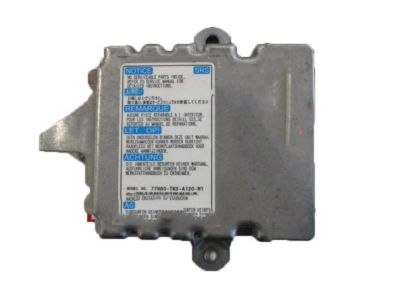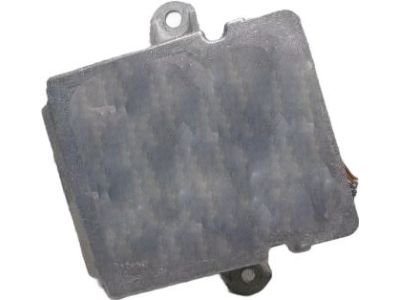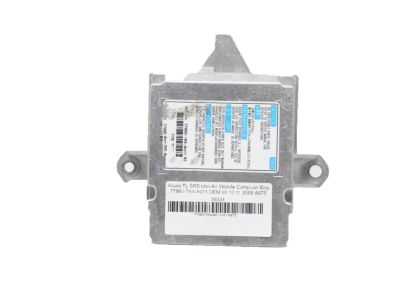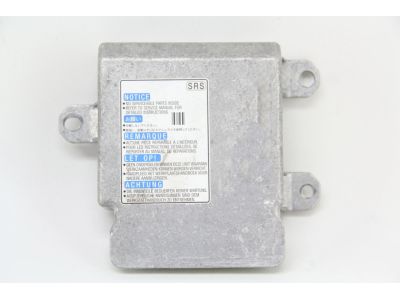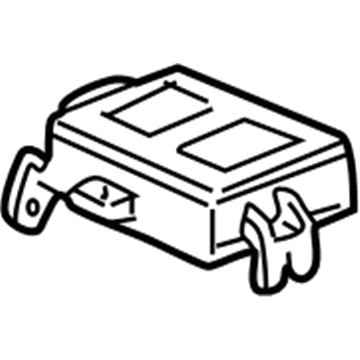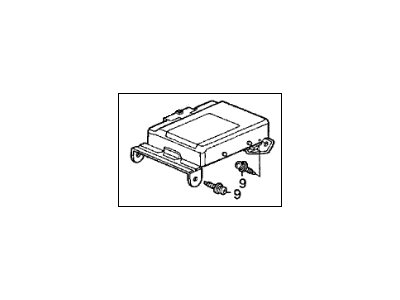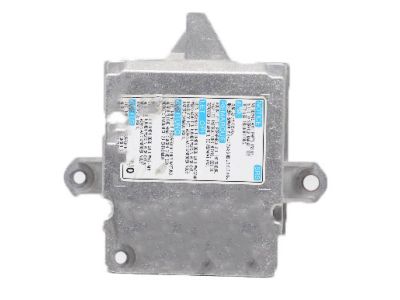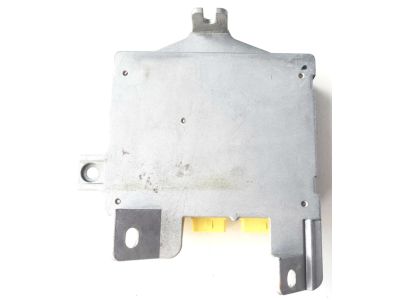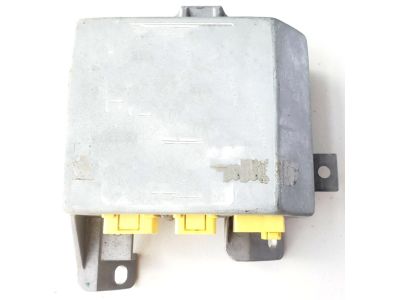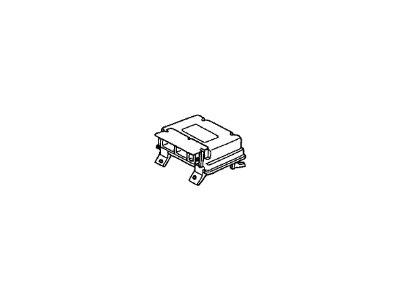×
- Hello
- Login or Register
- Quick Links
- Live Chat
- Track Order
- Parts Availability
- RMA
- Help Center
- Contact Us
- Shop for
- Acura Parts
- Acura Accessories

My Garage
My Account
Cart
Genuine Acura TL Air Bag Control Module
SRS Airbag Module- Select Vehicle by Model
- Select Vehicle by VIN
Select Vehicle by Model
orMake
Model
Year
Select Vehicle by VIN
For the most accurate results, select vehicle by your VIN (Vehicle Identification Number).
22 Air Bag Control Modules found

Acura TL Srs Unit (Rewritable)
Part Number: 77960-TK4-A11$528.30 MSRP: $696.46You Save: $168.16 (25%)Ships in 1-3 Business Days
Acura TL SRS Unit
Part Number: 77960-SEP-A12$494.18 MSRP: $651.48You Save: $157.30 (25%)Ships in 1-3 Business Days
Acura TL Ecm Bag (Rewritable)
Part Number: 77960-TK5-A12$526.56 MSRP: $694.17You Save: $167.61 (25%)Ships in 1 Business Day
Acura TL SRS Unit (Rewritable)
Part Number: 77960-TK5-A01$532.25 MSRP: $701.66You Save: $169.41 (25%)Ships in 1-3 Business Days
Acura TL Srs Unit (Rewritable)
Part Number: 77960-TK4-A01$532.75 MSRP: $702.32You Save: $169.57 (25%)Ships in 1-3 Business Days
Acura TL Srs Unit
Part Number: 77960-S0K-A82$692.87 MSRP: $913.42You Save: $220.55 (25%)Ships in 1-3 Business DaysAcura TL SRS Unit
Part Number: 77960-SEP-A11$493.26 MSRP: $650.26You Save: $157.00 (25%)Ships in 1-3 Business DaysAcura TL SRS Unit Kit
Part Number: 06772-SW5-A80$87.54 MSRP: $705.22You Save: $617.68 (88%)Ships in 1-2 Business DaysAcura TL SRS Unit
Part Number: 77960-SEP-A02$494.29 MSRP: $651.63You Save: $157.34 (25%)Ships in 1-3 Business DaysAcura TL SRS Unit (Trw)
Part Number: 77960-SEP-A21$494.71 MSRP: $652.18You Save: $157.47 (25%)Ships in 1-3 Business DaysAcura TL SRS Unit (Rewritable)
Part Number: 77960-TK5-A11$528.30 MSRP: $696.46You Save: $168.16 (25%)Ships in 1-3 Business DaysAcura TL SRS Unit (Continental)
Part Number: 77960-TK4-A72$533.13 MSRP: $702.83You Save: $169.70 (25%)Ships in 1-3 Business DaysAcura TL SRS Unit (Continental)
Part Number: 77960-TK5-A72$533.13 MSRP: $702.83You Save: $169.70 (25%)Ships in 1-3 Business DaysAcura TL SRS Unit (Continental)
Part Number: 77960-TK4-A73$534.17 MSRP: $704.20You Save: $170.03 (25%)Ships in 1-3 Business DaysAcura TL SRS Unit (Continental)
Part Number: 77960-TK5-A73$535.45 MSRP: $705.89You Save: $170.44 (25%)Ships in 1-3 Business DaysAcura TL SRS Unit
Part Number: 77960-S0K-A91$689.52 MSRP: $909.00You Save: $219.48 (25%)Ships in 1-3 Business Days
Acura TL Srs Unit (Rewritable)
Part Number: 77960-TK4-A12$526.56 MSRP: $694.17You Save: $167.61 (25%)
| Page 1 of 2 |Next >
1-20 of 22 Results
Acura TL Air Bag Control Module
We provide a broad range of OEM Acura TL Air Bag Control Module at unbeatable prices on our website. For your OEM parts, You can count on the guaranteed quality, manufacturer's warranty, outstanding customer service, and prompt delivery. We look forward to your visit.
Acura TL Air Bag Control Module Parts Questions & Experts Answers
- Q: What is the purpose and functionality of the Supplemental Restraint System,Air Bag and Air Bag Control Module on Acura TL?A:A Supplemental Restraint System (SRS), commonly called air bags, are used on all models to protect the driver and frount seat passenger from serious injury from head on or frontal impact; the crash sensors are behind the front bumper, and are part of the airbag assemblies mounted in the steering wheel and inside the frount passenger's dashboard. Some models have side-impact airbags, with sensors in seat backs in front of the occupants, and in the rear doors on four door models, while others have side curtain airbags hidden behind the headliner. The inflator assembly is contained in the steering wheel along with the driver's side airbag inflator module. An electrical signal from the SRS unit then triggers the inflator assembly, launching the airbag almost instantly. Above the glove box, the passenger's side airbag is larger than the driver's, and deploys through a trim cover that separates to open. It power the airbag system, checks the system at vehicle start from power on, and any faults trips the Srs light to indicate immediate service. Before you work on the steering wheel or dashboard, you want to disarm the system first by straightening the wheels, flip the key to LOCK and remove the negative battery terminal while waiting three minutes. Whenever you are dealing with an airbag module make sure that you take care enough not to put it on cushions with the airbag opening facing down. SRS components may not be electrically tested, and welding equipment may not be used unless airbag connectors are disconnected (easily identifiable by bright yellow color). Airbag modules or seat belt pre-tensioners that are damaged in a crash causing them to live must be returned to a dealer or qualified repair shop for safe disposal. Furthermore, all of the models have pyrotechnic units in the front seat belt retractor that activates in the event of an impact to eliminate slack in the seat belts and prime occupants for a collision; and the airbag system should be disabled when making work around the seats.
Related Acura TL Parts
Browse by Year
2014 Air Bag Control Module 2013 Air Bag Control Module 2012 Air Bag Control Module 2011 Air Bag Control Module 2010 Air Bag Control Module 2009 Air Bag Control Module 2008 Air Bag Control Module 2007 Air Bag Control Module 2006 Air Bag Control Module 2005 Air Bag Control Module 2004 Air Bag Control Module 2003 Air Bag Control Module 2002 Air Bag Control Module 2001 Air Bag Control Module 2000 Air Bag Control Module 1999 Air Bag Control Module 1998 Air Bag Control Module 1997 Air Bag Control Module 1996 Air Bag Control Module 1995 Air Bag Control Module
